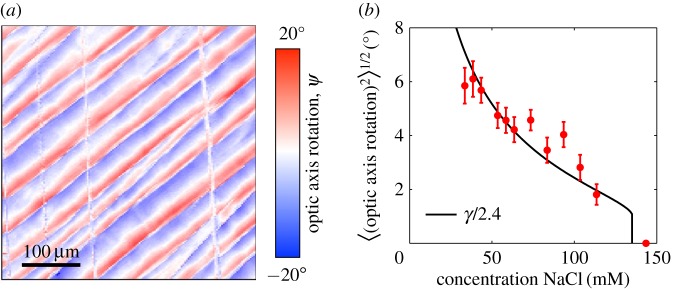Figure 10.
Shear bands can reorient the anisotropy of a colloidal film and can be controlled by adding salt. (a) The pattern of their distortion can be mapped by polarization microscopy, showing exactly how the bands localize shear strains. A sample with 43.5 mM NaCl is shown here. (b) The (root-mean-squared) average changes induced by the bands were measured for dispersions with various initial concentrations of NaCl. The average reorientations of the film (filled points) are proportional to the total amount of uniaxial compression applied to the film, between the gelation and aggregation fronts, as predicted by a DLVO calculation (black line).

